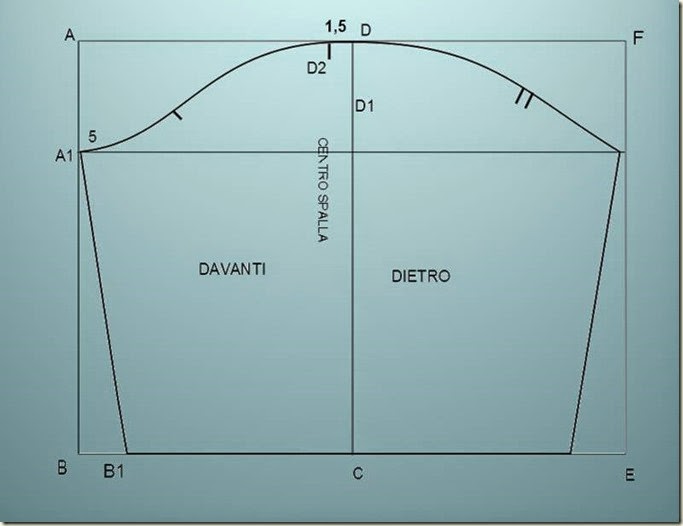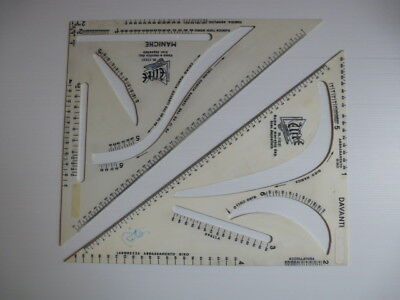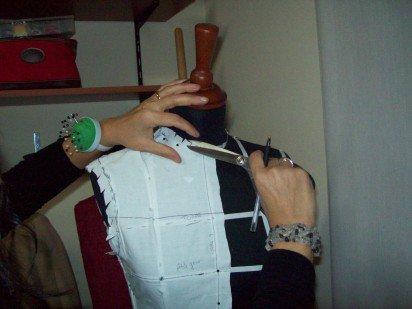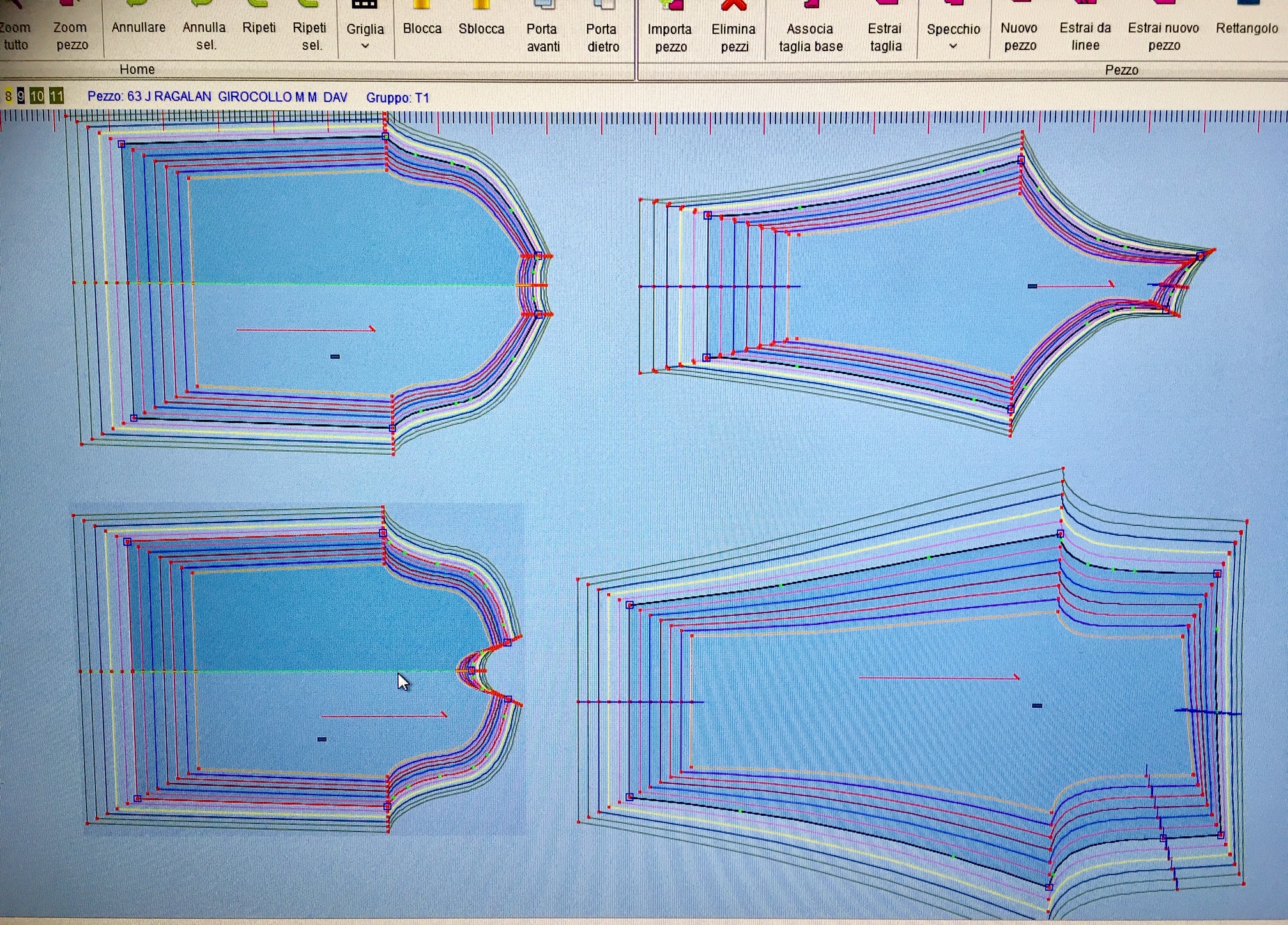The pattern – what’s it for?
The pattern is the base for creating a garment. Whether it’s a dress or a pair of boxers, this item is necessary to obtain the correct sizing and shaping of the garment. Above all these paper patterns are crucial to ensuring the precise cut of the fabric and consequently, the perfect sewing of the garment.
What is a pattern? It is a flat drawing of a three-dimentional shape. The fact that the fabric is flat, means we need a design that we can use in this dimension. The design must bear in mind many factors; for exampe a sleeve not only covers the arm but also part of the shoulder, it must be comfortable, furthermore it must have enough room to allow the arm to move freely. For this reason once it is sewn it must have the correct anatomical shape. Also the front and back of the garment must be tailored to follow our body shape; chest, waist, hips.
 (sleeve)
(sleeve)
How to make a paper pattern
The pattern making starts with the taking of accurate physical measurements such as the chest, the shoulders and the hips. Using these measurements a paper pattern is produced. It is a geometric design because it is based on precise calculations and its proportions are governed by the length and width of the original measurements. Consequently a pattern can be created using individual client mesaurements or as in the case of underwear the standard size guide. These basic measurements are then developed and proportionated using a set square. This instrument means we can avoid a myraid of calculations and enables us to speed up the work.
 (set squares)
(set squares)
Above all the pattern must allow for many variables. The fabric can be either rigid or elastic, the sewing can “eat” up to one centimeter of the fabric and reference notches must be postioned accurately on each piece in order to match precisely. Furthermore the center and the grain line are always marked, similary the hem allowance and the button positions. In the tailoring world there are also different ways to make an original pattern, for instance Moulage. it consists of draping muslin fabric around a mannequin; it’s a very skilled and difficult technique.
 (Moulage)
(Moulage)
The history
The first pattern was made around 1400. In this period they started to produce clothing in a more accurate way, using standard sizing and fitting. In the previous era, clothes were used as a symbol of your social standing The richest people wore fitted bespoke clothing, whilst the poor wore very simple shapeless tunics.
 (Pattern from 1400)
(Pattern from 1400)
Today, the classic paper pattern has been digitized using the CAD system. As a result of using the computer, with its greater precision and easier storage when combined with the fact that it can be automatically connected to the cutting procedure, the use of the paper pattern has almost been eliminated . Another advantage of this system is to have always on hand all the models with the possibility to modify these by video thus creating new ones. Today every garment produced in our company is made using CAD, although we have conserved in our archives all of the historic paper patterns made since the company was founded in 1977.
 (CAD)
(CAD)
